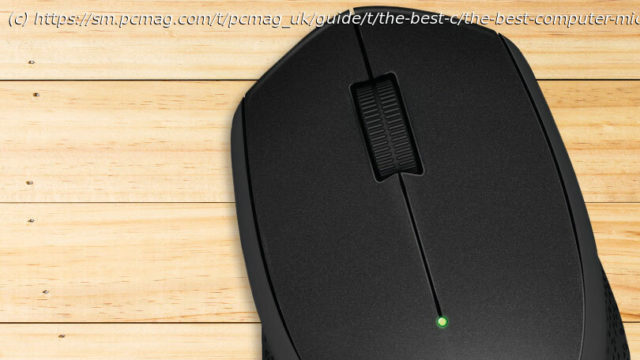Is it time to ditch that old PC mouse, or move beyond your laptop’s touchpad? Check out our click-worthy advice on buying mice for work or play, plus thorough reviews of the newest models.
In its most basic form, a computer mouse is simple hardware—a sensor on the bottom, two buttons and a scroll wheel on top—that lets you interact with programs as though they were extensions of your own hand. But while a mouse is simple in concept, the market for them is a scattered field of mouse genres, prices, and designs. You need to know a little about the landscape when you go shopping for a new model. Over time, distinct classes of mice have evolved, each made for different computing situations. The most common of these is the mainstream desktop mouse, designed for use with a desktop or laptop PC at a desk or table. Aside from the inevitable right and left mouse buttons, the usual features are a clickable scroll wheel and, in some cases, additional thumb buttons that let you navigate forward and back in your web browser. Travel mice (or «mobile mice») offer many of these same features but come in a smaller size. They’re designed to fit easily into the pocket of a backpack or laptop bag. For this same reason, however, travel mice tend to be small for most hands—you can use them just fine for short stints, but they become uncomfortable over long periods due to the unnatural grip required. Generally speaking, travel mice are wireless and battery-powered, so you may want to bring along a spare set of AA or AAA batteries if that is what they use. Beyond these «ordinary» mice are two key mouse genres: the gaming mouse, and the ergonomic mouse. There’s a lot of variance within each, and some crossover among all of these classes. (For example, a few «travel gaming» mice exist.) Let’s take a look at the gaming field first, then move on to other genres and aspects that affect all mice. How Do I Choose the Right Mouse for Gaming? Gaming mice amplify every element of the basic mouse concept to the extreme: more buttons, higher tracking resolutions, curvier curves. Some gaming mice are general gaming models, while others are designed for specific game genres. In the latter case, depending upon the style of the game that the mouse is intended for (first-person shooter, real-time strategy game, MMO), you may see a variety of specialized features. What most gaming mice have in common, though, is a combination of high-performance parts—laser sensors, feather-light click buttons, gold-plated USB connectors—and customization features, such as programmable macro commands and on-the-fly resolution switching. Gaming mice also stand apart in that the better ones tend to feature vendor-supplied software for setting up these custom features and shortcuts, defined sometimes on a per-game basis via profiles. The software’s quality and functionality can vary wildly from vendor to vendor; that’s where our reviews come in. Certain utilities are easier to pick up than others. For maximum comfort, some gaming mice let you customize the body of the mouse itself. Removable weights are common, letting you tweak the total heft of the mouse one way or the other. Some models take this even further, letting you shift the center of balance, or adjust the height and pitch of the palm rest. For non-gamers, these features are overkill; for dedicated gamers, they provide a competitive edge.






